Healthcare ERP Market Size
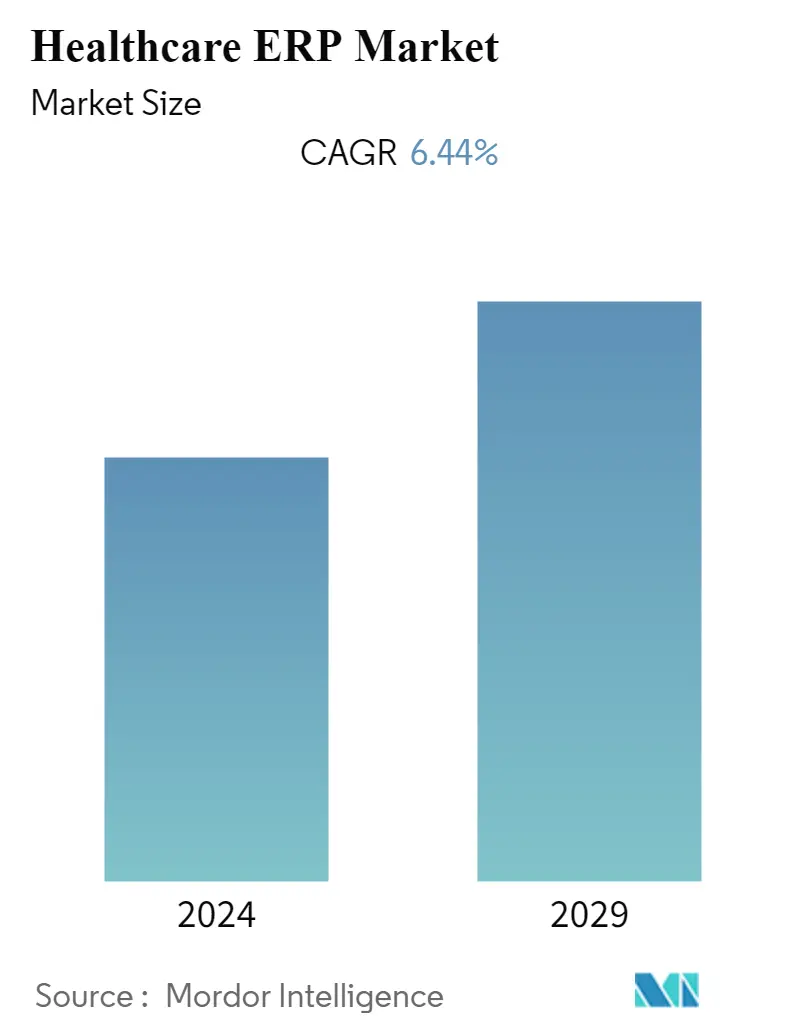
| Study Period | 2019 - 2029 |
| Base Year For Estimation | 2023 |
| CAGR | 6.44 % |
| Fastest Growing Market | Asia Pacific |
| Largest Market | North America |
| Market Concentration | Medium |
Major Players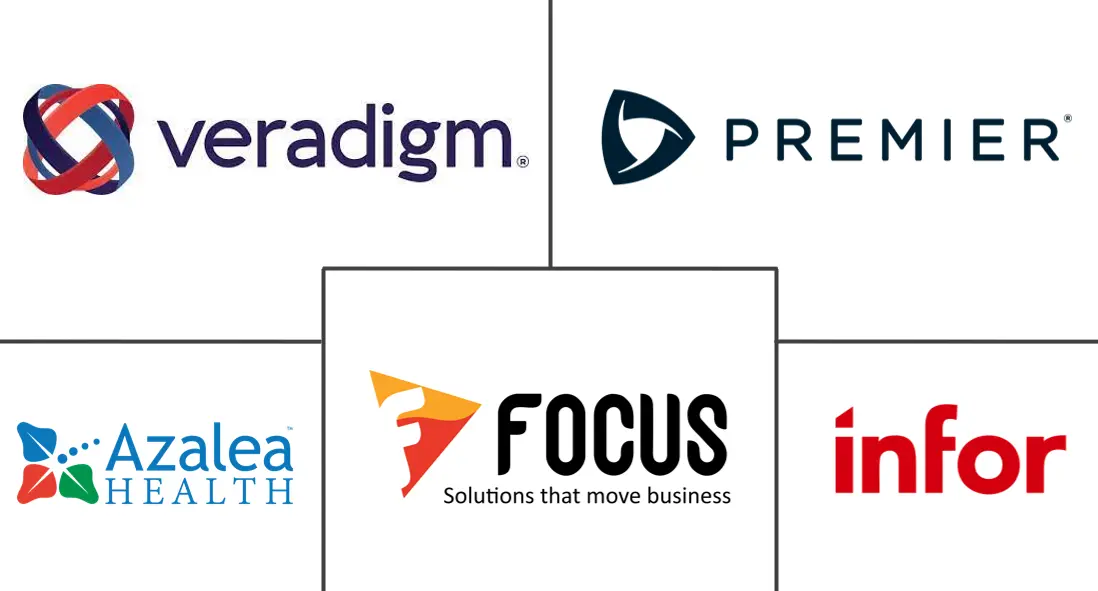
*Disclaimer: Major Players sorted in no particular order |
Healthcare ERP Market Analysis
The healthcare ERP market size is expected to grow from USD 7.16 billion in 2023 to USD 9.90 billion by 2028, registering a CAGR of 6.44% during the forecast period.
The most significant impact of COVID-19 was on the hospital supply chain, where there were enormous demands for masks, antivirals, and antibiotics as the medical staff labored to protect themselves from the virus. The production facilities struggled to meet the market demand as it rose. The factories and manufacturing units came to a stop as more and more manufacturing employees became infected with the virus. However, as per the report published by Deskera in September 2022, as COVID-19 subsided, hospital administrators turned their attention to modern technology and tools that enable them to be better prepared for the future. The top priorities for the healthcare industry include handling crucial business processes like billing and inventory, which is possible using ERP, and hence, the market is expected to have significant growth over the coming years.
The healthcare ERP market is expected to grow due to the growing adoption of ERP in healthcare, increasing demand for cost-effective healthcare solutions, and increasing demand for remote patient care. Through cloud ERP, healthcare practitioners can remotely access information, enabling them to give patients medical advice based on up-to-date patient records in the absence of their doctors.
In addition, the optimum use of the limited funds available to promote health and provide healthcare is a key goal of health systems. Hospitals and medical practices have been implementing new technological solutions to reduce expenses and enhance patient care for decades. For instance, in March 2022, Odoo stated that the ERP system can boost a hospital's productivity and encourage automation to reduce costs. In addition, by implementing ERP software to support improved supply chain management, most hospitals may significantly reduce their supply chain costs. Thus, the increasing demand for cost-effective healthcare solutions is expected to increase the growth of the healthcare ERP market over the study period.
Furthermore, the expansion of delivering the ERP platforms to various medical centers is expected to significantly impact market growth. For instance, in October 2021, Infor and system integrator Apex Systems delivered an ERP platform to Amsterdam UMC, consisting of the Academic Medical Center and the VU Medical Center. Infor CloudSuite Healthcare is an industry-specific cloud solution specifically designed for healthcare organizations' operational processes and integration needs. The solution can be used for the hospital's financial administration, procurement, and logistics. Hence, the expansion of ERP services for various medical centers is expected to have increased demand, which will likely propel the market to grow over the study period.
However, the high cost of ERP software and complex data conversion is expected to hinder market growth over the forecast period.
Healthcare ERP Market Trends
Cloud ERP Type is Expected to Have Largest Share in the Market Over the Forecast Period
Cloud ERP is an enterprise resource planning system that runs on a vendor's cloud platform, allowing organizations to access it online. Because of the lower initial costs, better flexibility, and simpler scalability of cloud-based ERP systems, healthcare providers are likely to adopt them at a growing rate during the forecast period, leading to significant growth for the cloud ERP segment. Similarly, a telehealth platform with an enterprise resource planning system can benefit home health providers, which is possible through cloud-based ERP systems.
In addition, the segment is expected to grow significantly over the study period owing to increasing demand for remote patient care and the advantages of cloud-based ERP systems over other solutions. For instance, as per the report published by Quocent in February 2022, the benefits of cloud-based ERP systems include increased ERP performance, procurement management, decreased operating costs, increased security, and enhanced access to information. These benefits of the cloud ERP increase the adoption in healthcare facilities, which is expected to have significant growth in the segment.
Furthermore, the new strategies by the market players help to continue the cloud-based ERP services over the coming years, which is expected to boost the market to grow over the forecast period. For instance, in July 2022, the Global Healthcare Exchange (GHX) stated that it helped advance healthcare digital transformation by fueling cloud ERP adoption. GHX successfully facilitated over 80 cloud ERP migrations and has been selected to manage more than 50 additional cloud migrations in the next two years. Hence, these continued services of cloud ERP are expected to boost segment growth over the forecast period.
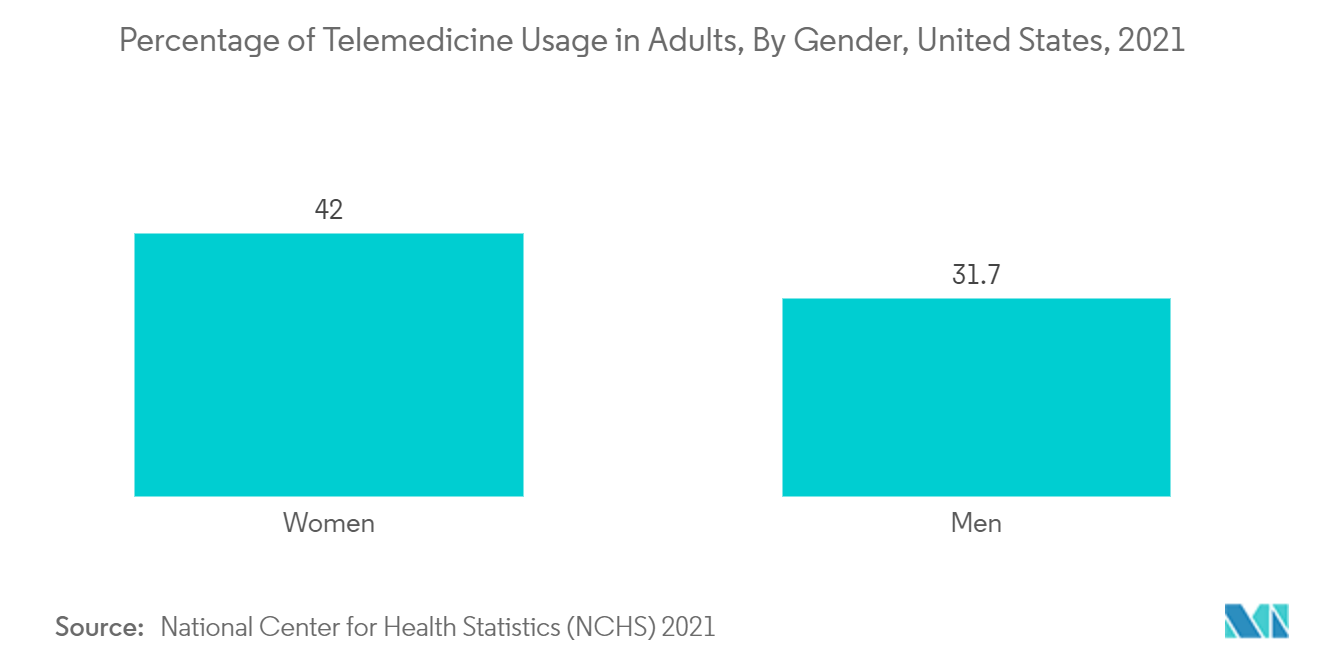
North America is Expected to Have Significant Growth in the Market Over the Forecast Period
North America is expected to account for the largest share of the healthcare ERP market due to the high adoption of healthcare IT and government initiatives promoting the adoption of ERP in healthcare facilities along with increasing remote patient care in the region. In addition, several key players in the market are constantly launching new software by partnering with other companies to extend their reach to end users, which is expected to propel the market growth in the region. As per various studies, it appears that enterprise resource planning (ERP) will be the next use of artificial intelligence (AI) that American hospitals will adopt, as electronic medical records (EMRs) have largely become the standard in the United States.
In addition, the market players are entering strategic partnerships and agreements for software platforms that help in improving patient outcomes. For instance, in March 2023, Infor, the industry cloud company, and HARMAN International entered a strategic partnership that will allow healthcare and life sciences organizations to modernize their data platforms, strategies, and roadmaps through customer-centric services and solutions. HARMAN, through its Digital Transformation Solutions (DTS) business unit, and Infor, will deliver a jointly developed integrated healthcare platform, built on the cloud, that will help industry clients seamlessly transform data, analytics, intelligence, and governance functions in a secure, cost-effective, and privacy-preserving manner.
Thus, all the above-mentioned factors like the high adoption of healthcare IT along with new strategies by the key market players in the region increase the usage of ERP in healthcare settings which is expected to boost the market growth over the forecast period.
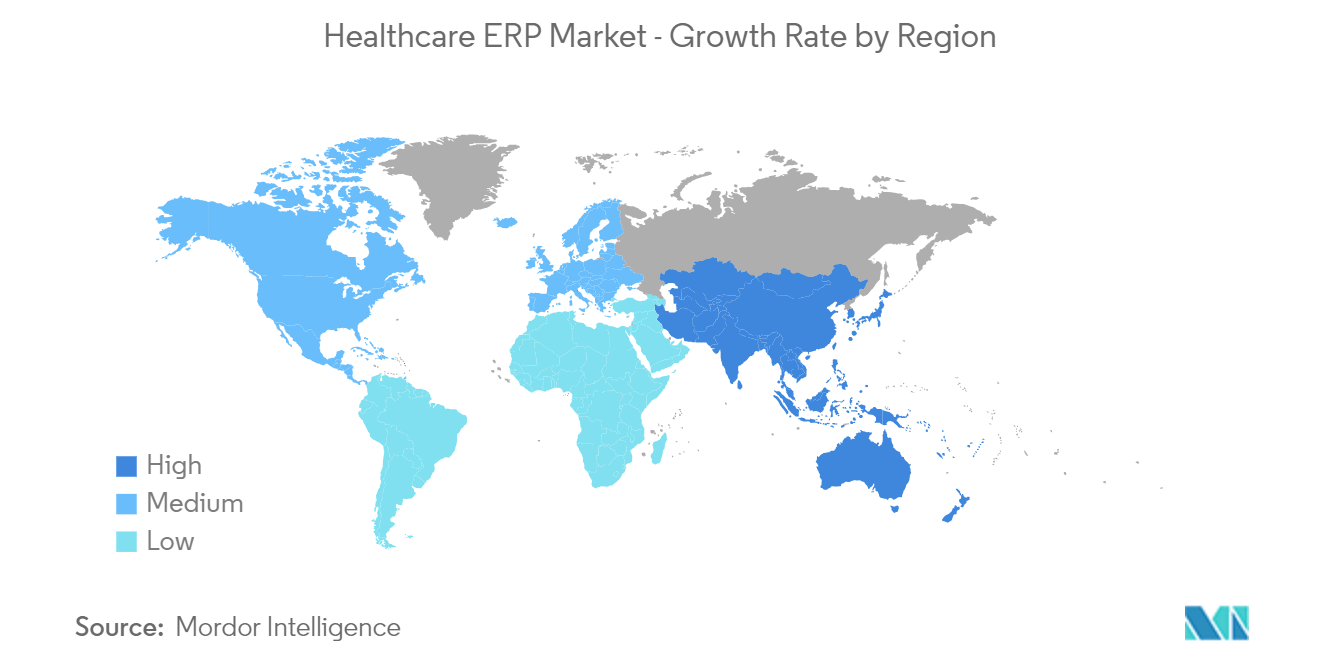
Healthcare ERP Industry Overview
The healthcare ERP market is moderately competitive, with major market players. Players in the market adopt strategic activities such as partnerships, product development, mergers, and acquisitions to capture the market share. Some of the key market players include Veradigm LLC, Azalea Health, Focus Softnet Pvt Ltd, Premier, Inc., Infor, and Others.
Healthcare ERP Market Leaders
-
Veradigm LLC
-
Azalea Health
-
Focus Softnet Pvt Ltd
-
Premier, Inc
-
Infor
*Disclaimer: Major Players sorted in no particular order
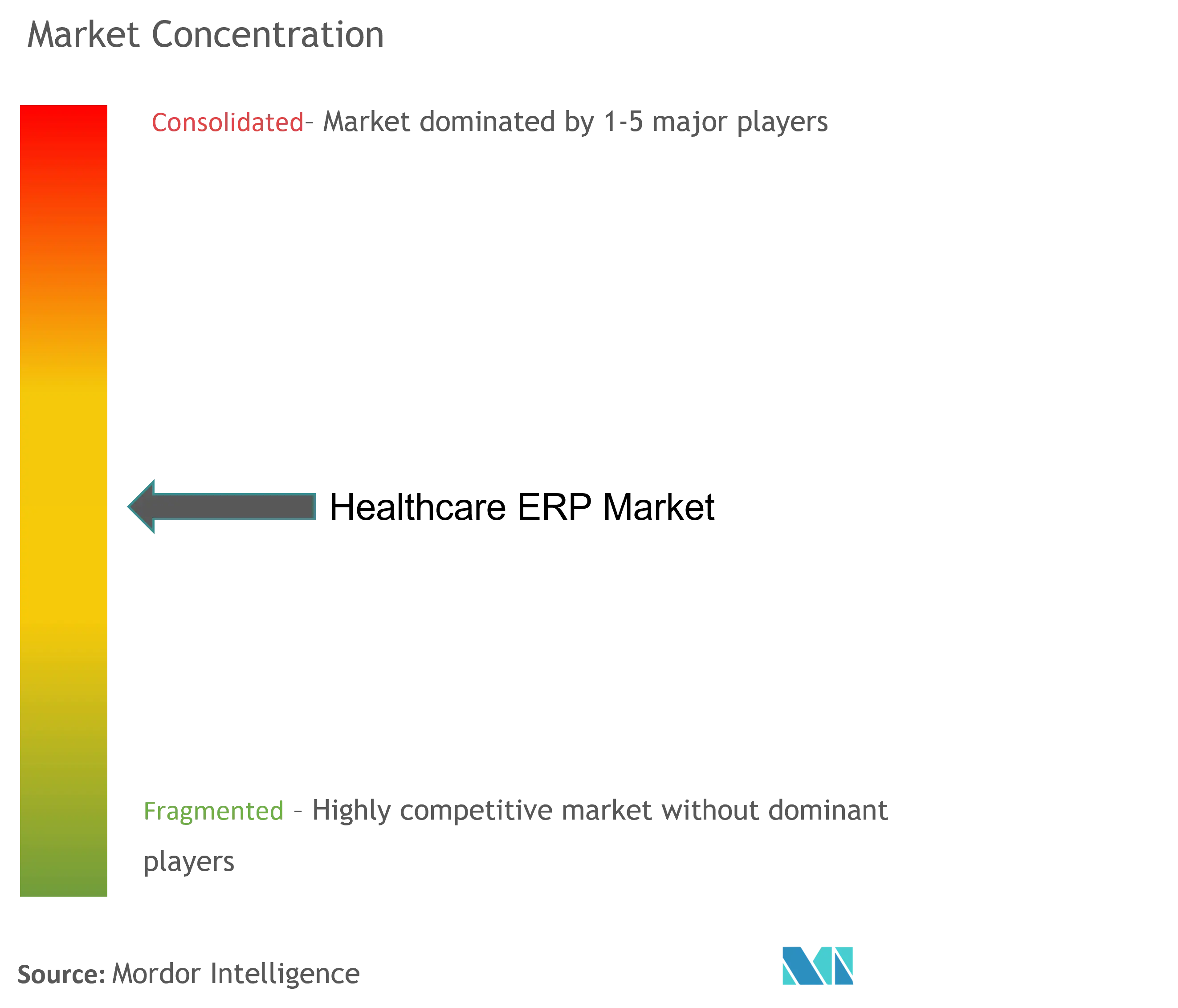
Healthcare ERP Market News
- April 2023: Workday, Inc., one of the leaders in enterprise cloud applications for finance and human resources, stated continued momentum within the healthcare industry, having recently added several new healthcare organizations to its growing global roster of customers.
- April 2023: Infor, the industry cloud company, stated that it had been selected by Amazon Web Services (AWS) as an Amazon HealthLake Partner. This underscores Infor's commitment to strengthening its relationship with AWS and its dedication to providing industry-specific solutions powered by high-performing, scalable, and secure cloud services.
Table of Contents
1. INTRODUCTION
- 1.1 Study Assumptions and Market Definition
- 1.2 Scope of the Study
2. RESEARCH METHODOLOGY
3. EXECUTIVE SUMMARY
4. MARKET DYNAMICS
- 4.1 Market Overview
-
4.2 Market Drivers
- 4.2.1 Growing Adoption of ERP in Healthcare
- 4.2.2 Increasing Demand for Cost-Effective Healthcare Solutions
- 4.2.3 Increasing Demand for Remote Patient Care
-
4.3 Market Restraints
- 4.3.1 High Cost of ERP Software
- 4.3.2 Complex Data Conversion
-
4.4 Porter's Five Forces Analysis
- 4.4.1 Bargaining Power of Buyers/Consumers
- 4.4.2 Bargaining Power of Suppliers
- 4.4.3 Threat of New Entrants
- 4.4.4 Threat of Substitute Products
- 4.4.5 Intensity of Competitive Rivalry
5. MARKET SEGMENTATION (Market Size by Value - USD)
-
5.1 By Type
- 5.1.1 Cloud ERP
- 5.1.2 On-premise ERP
- 5.1.3 Hybrid ERP
-
5.2 By Offering
- 5.2.1 Software
- 5.2.2 Services
-
5.3 By Applications
- 5.3.1 Fiscal Management
- 5.3.2 Supply Chain Management
- 5.3.3 Human Capital Management
- 5.3.4 Inventory and Material Management
- 5.3.5 Other Applications
-
5.4 By End User
- 5.4.1 Hospitals
- 5.4.2 Clinics
- 5.4.3 Private Healthcare Institutions
- 5.4.4 Other End Users
-
5.5 Geography
- 5.5.1 North America
- 5.5.1.1 United States
- 5.5.1.2 Canada
- 5.5.1.3 Mexico
- 5.5.2 Europe
- 5.5.2.1 Germany
- 5.5.2.2 United Kingdom
- 5.5.2.3 France
- 5.5.2.4 Italy
- 5.5.2.5 Spain
- 5.5.2.6 Rest of Europe
- 5.5.3 Asia-Pacific
- 5.5.3.1 China
- 5.5.3.2 Japan
- 5.5.3.3 India
- 5.5.3.4 Australia
- 5.5.3.5 South Korea
- 5.5.3.6 Rest of Asia-Pacific
- 5.5.4 Middle East and Africa
- 5.5.4.1 GCC
- 5.5.4.2 South Africa
- 5.5.4.3 Rest of Middle East and Africa
- 5.5.5 South America
- 5.5.5.1 Brazil
- 5.5.5.2 Argentina
- 5.5.5.3 Rest of South America
6. COMPETITIVE LANDSCAPE
-
6.1 Company Profiles
- 6.1.1 Veradigm LLC
- 6.1.2 Azalea Health
- 6.1.3 Focus Softnet Pvt Ltd
- 6.1.4 Infor
- 6.1.5 Elinext
- 6.1.6 MATIYAS
- 6.1.7 Oracle
- 6.1.8 CentralBOS, LLC
- 6.1.9 Premier, Inc
- 6.1.10 Deskera
- 6.1.11 Sage Software Solutions Pvt Ltd
- 6.1.12 Rootstock Software
- *List Not Exhaustive
7. MARKET OPPORTUNITIES AND FUTURE TRENDS
** Subject To AvailablityHealthcare ERP Industry Segmentation
As per the report's scope, Enterprise resource planning (ERP) refers to the type of software companies and organizations use to manage business activities such as accounting, procurement, project management, risk management and compliance, and supply chain operations. Healthcare ERP systems help hospitals and medical professionals streamline their business processes and run their businesses more efficiently. The Healthcare ERP Market is Segmented by Type (Cloud ERP, On-premise ERP, and Hybrid ERP), Offering (Software and Services), Applications (Fiscal Management, Supply Chain Management, Human Capital Management, Inventory, and Material Management, and Other Applications), End User (Hospitals, Clinics, Private Healthcare Institutions, and Other End Users) and Geography (North America, Europe, Asia-Pacific, Middle East and Africa, and South America). The market report also covers the estimated market sizes and trends for 17 countries across major regions globally. The report offers the value (in USD) for the above segments.
| By Type | Cloud ERP | |
| On-premise ERP | ||
| Hybrid ERP | ||
| By Offering | Software | |
| Services | ||
| By Applications | Fiscal Management | |
| Supply Chain Management | ||
| Human Capital Management | ||
| Inventory and Material Management | ||
| Other Applications | ||
| By End User | Hospitals | |
| Clinics | ||
| Private Healthcare Institutions | ||
| Other End Users | ||
| Geography | North America | United States |
| Canada | ||
| Mexico | ||
| Geography | Europe | Germany |
| United Kingdom | ||
| France | ||
| Italy | ||
| Spain | ||
| Rest of Europe | ||
| Geography | Asia-Pacific | China |
| Japan | ||
| India | ||
| Australia | ||
| South Korea | ||
| Rest of Asia-Pacific | ||
| Geography | Middle East and Africa | GCC |
| South Africa | ||
| Rest of Middle East and Africa | ||
| Geography | South America | Brazil |
| Argentina | ||
| Rest of South America |
Frequently Asked Questions
What is the current Healthcare ERP Market size?
The Healthcare ERP Market is projected to register a CAGR of 6.44% during the forecast period (2024-2029)
Who are the key players in Healthcare ERP Market?
Veradigm LLC, Azalea Health, Focus Softnet Pvt Ltd, Premier, Inc and Infor are the major companies operating in the Healthcare ERP Market.
Which is the fastest growing region in Healthcare ERP Market?
Asia Pacific is estimated to grow at the highest CAGR over the forecast period (2024-2029).
Which region has the biggest share in Healthcare ERP Market?
In 2024, the North America accounts for the largest market share in Healthcare ERP Market.
What years does this Healthcare ERP Market cover?
The report covers the Healthcare ERP Market historical market size for years: 2019, 2020, 2021, 2022 and 2023. The report also forecasts the Healthcare ERP Market size for years: 2024, 2025, 2026, 2027, 2028 and 2029.
Healthcare ERP Industry Report
Statistics for the 2024 Healthcare ERP market share, size and revenue growth rate, created by Mordor Intelligence™ Industry Reports. Healthcare ERP analysis includes a market forecast outlook to for 2024 to 2029 and historical overview. Get a sample of this industry analysis as a free report PDF download.



